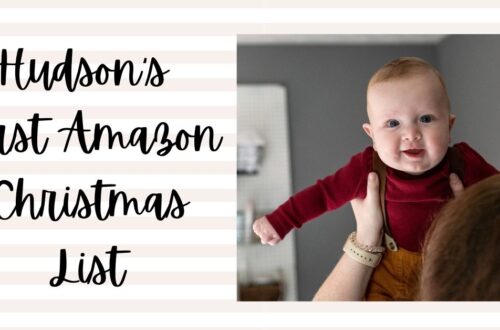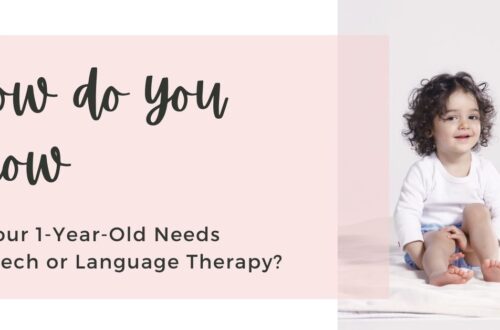
5 Daily Routines to Support your 1-year-old’s Language Skills
I’ll just say it: speech therapy can be overwhelming. If it was a surprise when your child was referred for an evaluation or a surprise when therapy was actually recommended during that evaluation, it can be even more overwhelming.
All of a sudden, you have not only committed to another weekly (or multiple times/week) obligation, but you are also most likely expected to participate, and responsible for implementing strategies/helping your little one practice at home. No pressure!
Like many SLPs, I believe that part of being a speech therapist is not just working with the child, but also working with the parent (e.g., the patient’s parent). This can mean helping parents process. This is part of what we are here for!
So yes, it will seem overwhelming and it will be a process. Likely a rewarding process for both you and your child, but that doesn’t mean it won’t necessarily be challenging. So before we talk about some daily routines, let’s start here:
Does my 1-year-old need speech or language therapy?
Let’s be honest – regardless of if you are a new parent or not, it can be hard to tell if your child has a delay when they are this little! If you have questions about what your child’s language skills should look like between 1-2 years, be sure to check out How do You Know if Your 1-Year-Old Needs Speech or Language Therapy? for more info.
Also be sure to sign up here for access to my “Freebies Library” and look for “5 Questions to Ask Yourself: 1-2 Years” for help to ask yourself the right questions to determine if your child needs a speech and language evaluation.
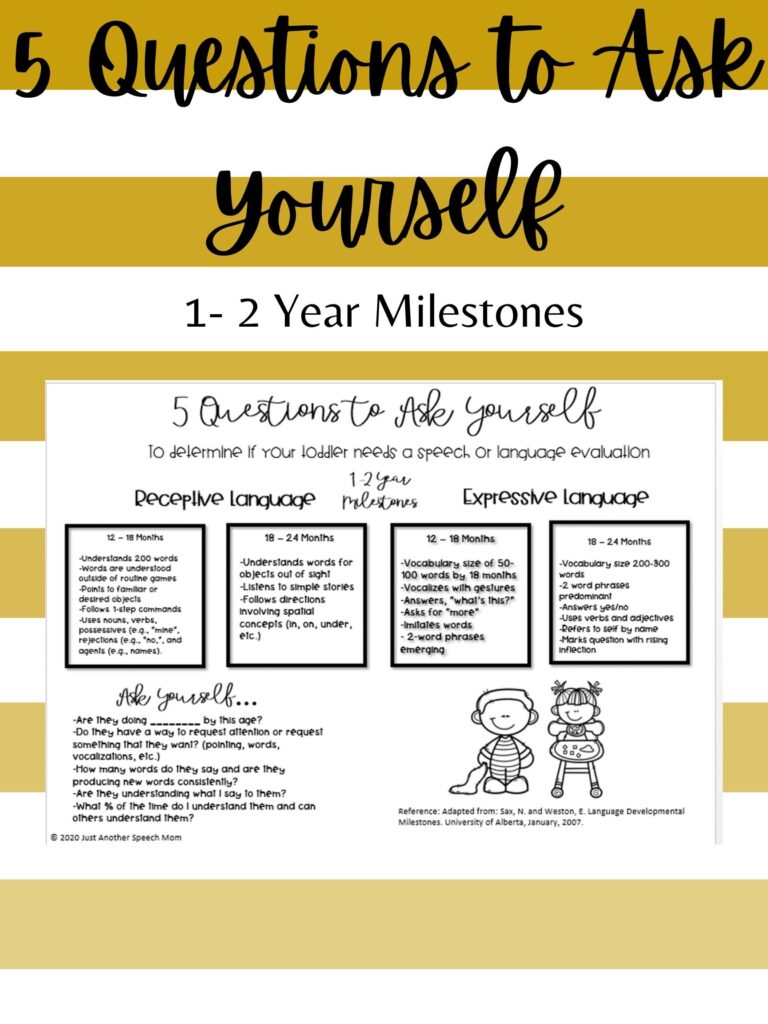
What will speech therapy sessions look like?
At this age, speech therapy is very play based and usually involves a high level of parent involvement. In short, attending sessions and learning about the strategies that your SLP is implementing will help you be able to implement them at home and allow for a higher chance of making progress quickly.
Parent coaching, or providing opportunities for active practice and feedback with parents during a session, is a treatment method that is typically used with this age.
A meta-analysis that compared different instructional methods used by clinicians in therapy sessions revealed that parents and caregivers benefitted more from a coaching method of instruction vs. traditional instruction.
(Sone et. al., 2021).
Translation: You as the parent will most likely benefit more from actively participating in your child’s sessions rather than just being told what your child worked on in speech. That being said..
How can I work on my child’s language skills at home?
Okay. You brought your little one in to be evaluated, and have decided to pursue therapy. Your awesome SLP should be providing you with specific parent training and resources to help you out during your sessions and at home.
OR your child appears to be on track with their milestones, and you are just wanting to know ways you can continue to encourage them and support their skills throughout your typical day (also great!)
Did you know that there is actual research to support how overwhelmed parents may feel when asked to participate in their child’s therapy? You are busy, you may have multiple kids with different activities, you may be overwhelmed emotionally by a diagnosis, etc.
A meta-analysis of studies that addressed therapy with parent-child interactions acknowledged many reasons why parents may feel overwhelmed for a variety of reasons, which they sum up nicely here:
“During the intervention, parental engagement is affected by how achievable and feasible it is for them to attend and participate, whether it is tailored to their preferences for learning and the quality of their relationship with the clinician”
(O’Toole et. al., 2021).
It’s part of our job to make sure we as therapists are providing you as the parent with realistic, natural ways to incorporate these language strategies into your day. So what are some ways you can easily work with your little one at home?
Target Language Skills Easily through these 5 Daily Routines

You do not have re-invent the wheel for this one and come up with a bunch of awesome activities that you pour time and effort into creating! Or you definitely can if that is something you are passionate about and have that kind of time.
There are so many easy ways that you can boost those language skills during daily routines that they already know. No extra materials or prep required (WIN!)
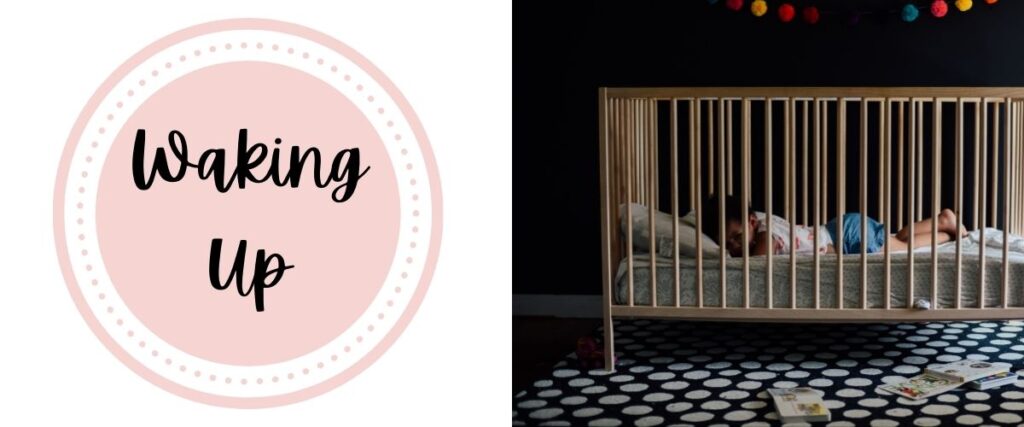
Mornings can be such a sweet time with your little one. Create a morning routine by doing all of you morning activities in the same order every day. Obviously little ones are always growing and may be unpredictable; however, sticking to a routine as best as you can will help them learn what to anticipate…and also allow for smoother transitions all around. Win!
Suggestions:
- Sing the same 1-2 “morning songs” to start your little one’s morning routine. This could be something well known or something you made up! Songs and rhymes are a great way for them to learn new vocabulary. As their vocabulary is growing, start leaving off the endings of a familiar song or phrase and encourage them to fill it in.
- Create a visual schedule of activities in their morning routine to help them know what to expect, and help them learn vocabulary related to those activities. This could be pictures to represent those activities, or actual pictures of them doing it! (brush teeth, eat breakfast, etc.)

Maybe you bring your little one to daycare every morning, or maybe you two are constantly on the go running lots of different errands (except maybe not right now, thanks COVID). Either way, use this as a time to describe what’s happening to your little one. Describing events as they are happening is also a great way to help grow vocabulary!
Suggestions:
- Have pictures that you keep in your car for routine or familiar places that your little one visits (daycare, library, your house, Target…etc.). As you are getting them set in their car seat, describe where you are going as you show them the picture. Example: “Look Hudson, we’re going to Target! (point to picture) We need to go to Target to get food to make dinner tonight.
Alternate: “We need to go to Target so mommy can browse the entire Hearth & Hand collection while drinking a latte.” Or you know, whatever works for you. 🙂
- Sing the same songs in the car to help them learn vocabulary. Being repetitive isn’t bad and can actually help them learn vocabulary because they are being exposed to it more. This may be less fun for you, especially if you can’t stand to listen to ‘Baby Shark’ one more time. I promise it’s helping!
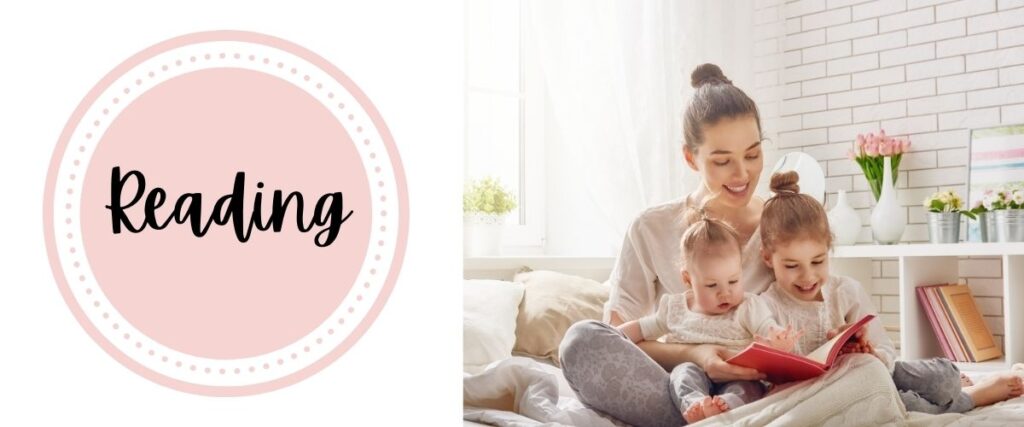
I’m a BIG advocate of reading to your baby or little one! See 3 Ways Reading to Your Baby Will Encourage Their Language Skills here. Reading is a great way to encourage language skills and grow vocabulary no matter the age.
Suggestions:
- Label, label, label! Label the pictures, actions, colors, shapes, animals, everything by pointing to the picture and saying the word. Language exposure is huge for language growth, and it starts right from the very beginning.
- Describe and comment on pictures. If you don’t think your toddler will sit through a book with a lot of text, don’t expect them to! Instead of reading, paraphrase the text in a way that’s relatable to them, and describe pictures.
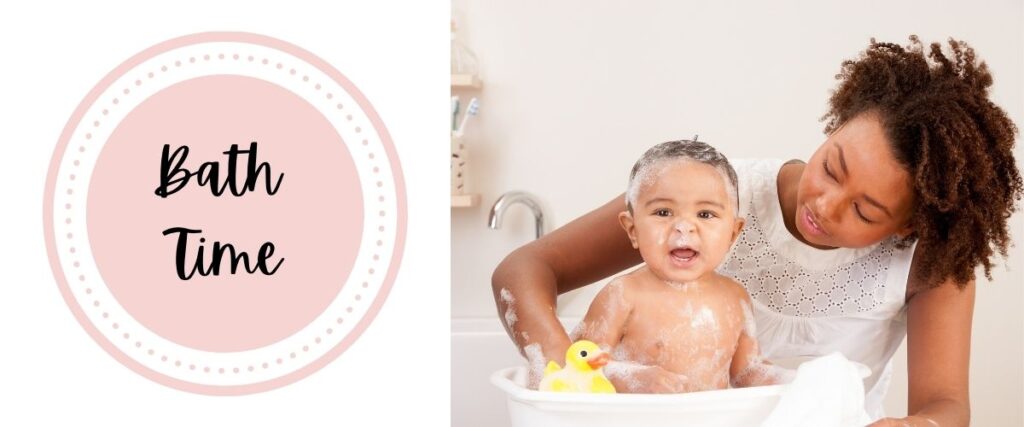
Bath time started out as a stressful time for me and H, but has quickly become one of my favorite times of the day. Seriously so many opportunities for language exposure and growth here.
Suggestions:
- Again, label! Saying it a ton, because it’s really important. By 18 months, children should be able to understand around 200 words and have an expressive vocabulary size of 50-100 words (Sax & Weston, 2007). How do they achieve this? Language exposure is key. Label bath toys, point to different body parts, sing songs, and vocalize back and forth. Practice concepts like “in” the bath and “out” of the bath, and turning the water “on” and “off.” Talk about the texture of the towel – literally anything!
- Have a favorite bath toy? Play hide and seek by “hiding” it in different places (under a washcloth, under water, behind another toy, etc.) and ask “Where’s ________?” See if your little one will look at, point to, vocalize, or give a word in response. You can reinforce this with something like “Great job! You found ducky. Ducky was under the towel! Duck says quack.” Model language, and then expand.

Again, routine is key here. As a new mom, this is something I’ve read in multiple books, blog posts, etc., and is important to help them know what to expect. In doing the same activities every evening, you can also continually expose them to the same high frequency words, which will (again) begin to help them learn new words to grow their vocabulary.
High frequency bedtime words: crib, bed, blanket, sleep, pillow, light, bear, book, etc. By 18 months, children should be able to point to familiar objects (Sax & Weston, 2007).
Suggestions:
- Play a fun bedtime game to help grow their vocabulary by turning off the lights, and using a flashlight to “find” different bed time items. For example, you could say something like “we need our teddy to go to sleep! Where’s teddy?” Then you can have them find it by shining the flashlight on it.
- Another visual schedule – Is bed time hard? Suddenly, my toddler’s bedtime routine is 20 minutes longer because he requests to read every book that he can see (anybody feel me?) Again, try a visual schedule! Put pictures in order of bedtime activities to help them know what to expect. Customize it and make it work for you! This could be more complex (bath, jammies, bedtime sippy, book, brush teeth..ect.) or simpler (bath, book, bed).
Okay mama – the point of this is not to stress you out or overwhelm you. If these suggestions don’t work for you, think of other things you already do daily and go from there! Make this unique to you and your family – let me know what you try!

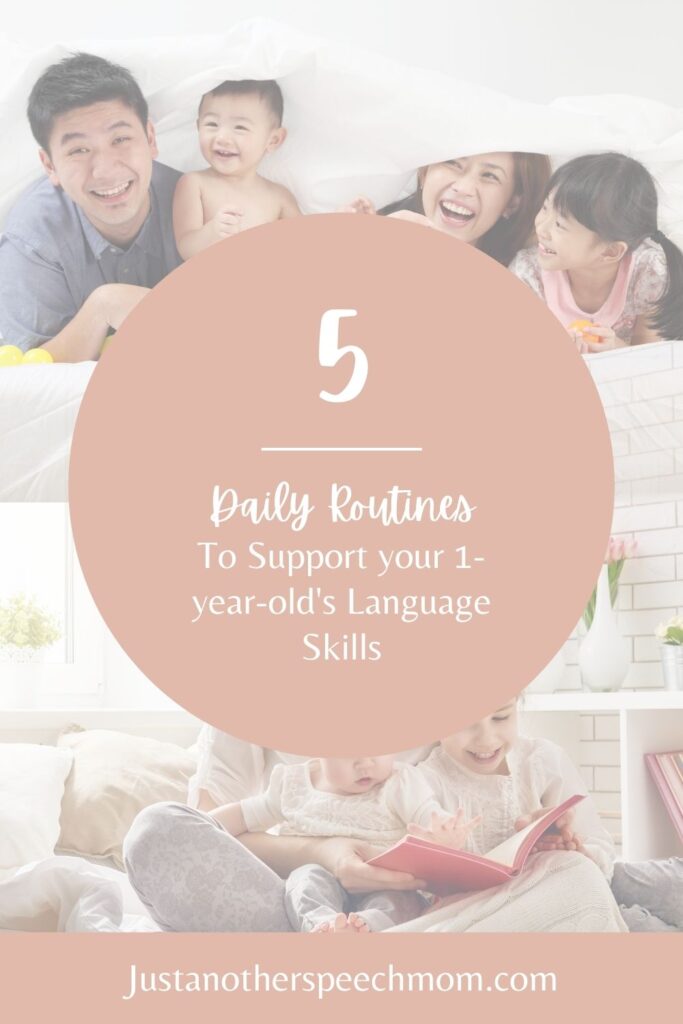
Sources:
O’Toole, C., Lyons, R., & Houghton, C. (2021). A qualitative evidence synthesis of parental experiences and perceptions of parent-child interaction therapy for preschool children with communication difficulties. Journal of Speech, Language, and Hearing Research. https://doi.org/10.1044/2021_jslhr-20-00732
Adapted from: Sax, N. and Weston, E. Language Development Milestones. University of Alberta, January, 2007.
Sone, B. J., Lee, J., & Roberts, M.Y. (2021). Comparing instructional approaches in caregiver-implmented intervention: An interdisciplinary systematic review and meta-analysis. Journal of Early Intervention. https://doi.org/10.1177/1053815121989807



